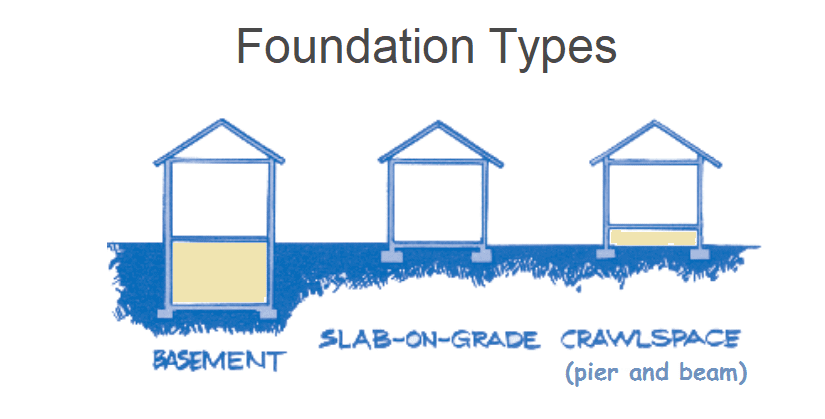Types of Foundation for Buildings and their Uses
The foundation is an essential component of any structure, providing support and stability. There are numerous varieties of building foundations, each with their own advantages and disadvantages. Here are some prevalent foundation types and their applications:
Basement foundation: A basement foundation is created by excavating a hole in the earth and pouring concrete for the basement’s walls and floors. In residential structures, basements are frequently utilized for additional living space or storage.
Crawlspace Foundation: A crawlspace foundation is constructed by constructing a perimeter foundation wall and leaving a space underneath the building. This form of foundation is frequently used in residential construction because it facilitates easy access to plumbing and electrical systems.
A slab-on-grade foundation: This consists of a concrete slab that is poured directly onto the earth. This form of foundation is frequently employed in residential construction, particularly in regions with high water tables.
Pile foundation: A pile foundation is comprised of long columns or piles that are driven into the earth to support the structure. This form of foundation is frequently employed in regions with soft soil or high-water tables.


Mat foundation: A mat foundation, also referred to as a raft foundation, is a large concrete slab that encompasses the entire footprint of the building. This form of foundation is frequently employed for structures with heavy loads or in regions with poor soil conditions.
Pier foundation:A pier foundation comprises of concrete or masonry piers that provide support for the structure. This form of foundation is frequently used for structures situated on slopes or uneven terrain.
Grade beam foundation: A grade beam foundation is a reinforced concrete beam that spans between foundation piers or foundation walls. This form of foundation is frequently employed in regions with poor soil conditions. In conclusion, the type of foundation used depends on several factors, including the soil conditions, the building’s capacity requirements, and the local building codes. To ensure the stability and security of a structure, it is essential to choose the proper foundation form.
Disclaimer: This content is provided solely for your review. Erusu Consultants takes no liability for this article. The reader is advised to form their own opinion. Please consult a structural engineer before making any final decisions.






